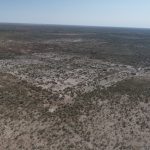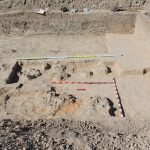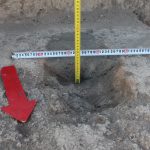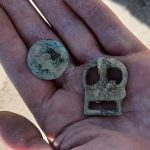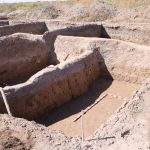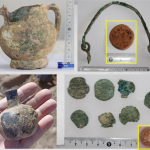Archaeological studies by archaeologists of Tatarstan in Uzbekistan
From the middle of September to the beginning of October 2024, the Institute of Archaeology named after A.Kh. Khalikov of the Tatarstan Academy of Sciences jointly with the Karakalpak Scientific Research Institute for the Humanities of the Karakalpak branch of the Academy of Sciences of the Republic of Uzbekistan and the Nukus State Pedagogical Institute named after Ajiniyaz continued archaeological studies in Uzbekistan. In this field season two monuments of the Kerder culture, located in the Aral delta of the Amu Darya river, were investigated: Kurgancha-Kala settlement (VII-VIII centuries) and Khaivan-Kala settlement (VII-X centuries).
The Kurgancha-Kala settlement is located in the Taxtakópir district of the Republic of Karakalpakstan, and was discovered in 1945 by the Khwarazm archaeological and ethnographic expedition. Its systematic archaeological study was carried out with some interruptions in 1965-1971. The monument in the plan is an irregular rectangle with an area of about 12 hectares.
During archaeological works at Kurgancha-Kala in 2024, an excavation of 92 square meters was laid in the southeastern part of the site in the form of an extension from the west to excavation IV, where objects of regular residential development were identified earlier. The thickness of the cultural layer in the excavation, represented by several building horizons was 1.4 meters. The excavation revealed the poorly preserved remains of a building with two rooms made of raw bricks bonded with clay mortar. The rooms contained hearths and vessels were placed vertically on the floor. The fragments of hand-made ceramic vessels and stone millstones were cleaned there. Also copper coins, a bronze buckle and ceramic spindles were found at the excavation.
The settlement of Khaivan-Kala is located in the Nukus district of the Republic of Karakalpakstan, first surveyed in 1947 by the Karakalpak ethnographic team of the Khwarazm archaeological and ethnographic expedition. In subsequent years, the settlement was repeatedly surveyed and excavated. By its configuration Khaivan-Kala is an equilateral rectangle of 400 x 460 m, stretching from North-Northeast to South-Southwest. Inside the settlement, surrounded by a flabby rampart, there were residential quarters in the shape of large houses, separated from each other by rather wide streets and perpendicular alleys, which are traced in the relief.
In 2024, works continued at Khaivan-Kala on excavation V (180 sq. m.), laid in the central part of the settlement in the last field season. In the 2024 field season, the study of a structure with three rooms made of raw bricks and pakhsa (beaten earth), and cultural strata, formed during the period of the site’s existence, was completed. Below, under this object, objects of the following building and chronological horizon began to appear, represented by a site, lined by raw bricks, and a tandoor. Finds from the excavation are: numerous copper coins, fragments and intact glass and clay vessels.

